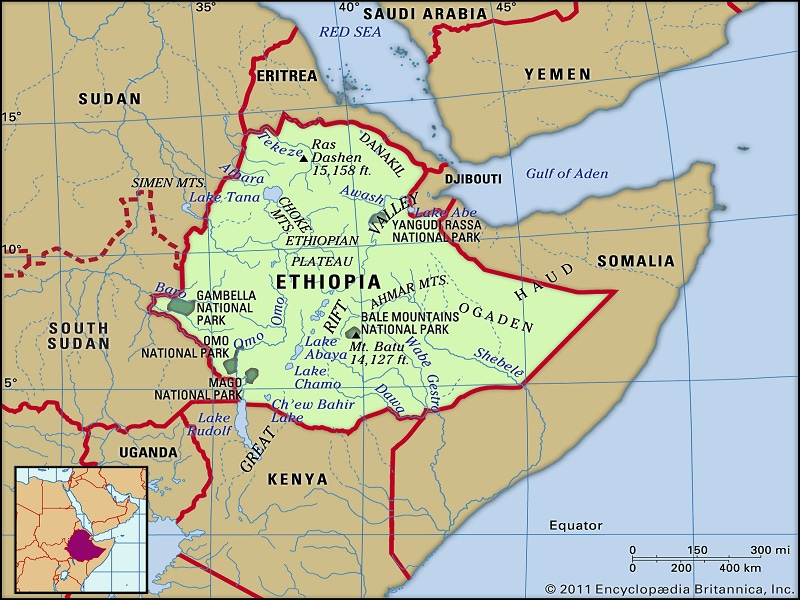BRICS Will Almost Certainly Formalize A Relationship With Ethiopia During Its Next Summit
BRICS countries understand that formally expanding the number of equal members could change the dynamics of the entire organization, which is why it’s treading very carefully and considering pragmatic compromises between the zero-sum choice of membership or non-membership. For this reason, while Ethiopia likely won’t join as a formal member, it’ll almost certainly formalize a relationship via BRICS+.
Ethiopia is Africa’s second most populous country, it used to have one of the world’s highest growth rates prior to the pandemic, and is the continent’s historical cradle of Pan-Africanism, which is why the announcement last week that it wants to join BRICS generated so much media attention. This civilization-state and its envisaged organizational partners, especially that group’s Russia-India-China (RIC) core with whom it’s already very close, would mutually benefit by working together through that format.
The challenge is that formal membership is difficult for Ethiopia to obtain at present absent the bloc’s existing members fundamentally reconceptualizing their organization’s role due to the widespread devastation caused by that country’s two-year-long conflict. This means that Ethiopia cannot meaningfully contribute to accelerating financial multipolarity processes and could even become a burden just like Venezuela might be if it too is allowed to officially join during the next summit.
Valdai Club program director Timofei Bordachev responsibly tempered expectations about BRICS’ possible expansion in remarks that he shared with TASS on Monday. According to this widely respected expert, “The issue of possible expansion is quite topical, since many countries across the globe are attracted by BRICS, viewing it as an alternative to Western institutions. But the countries of the organization take this matter very seriously and are in no hurry or a chase after records.”
With so many countries applying to join BRICS, many of which have economies that are similarly troubled but equally promising as Ethiopia’s and Venezuela’s, it also wouldn’t be wise for the bloc to reject their requests without formalizing a relationship for them to build upon in the future. Therein lies the importance of the BRICS+ model devised by Russian geo-economic guru Yaroslav Lissovolik, which represents a compromise between the zero-sum choice of membership or non-membership.
In brief, this envisages BRICS using its existing members as “anchors” for expanding within their respective regions through three levels of cooperation. At its most basic, the “anchor state” prioritizes the comprehensive expansion of economic-financial ties with a nearby country in order for them to indirectly reap the benefits of the first’s BRICS membership, while the next level involves BRICS as a whole doing the same with that said country.
The final level concerns the establishment of relations between BRICS and the “anchor state’s” respective regional integration organization or between BRICS and other related organizations that don’t yet formally fall within that group’s ambit. No formula has been agreed upon for deciding the criteria for each BRICS+ level, but it wouldn’t be a good idea to standardize this anyhow since the preceding possibilities are already flexible enough to account for every country that’s interested in joining.
As applied to Ethiopia in the order that each level was described, this could take the form of: 1) South Africa comprehensively strengthening the economic-financial dimension of their existing partnership; 2) BRICS – and especially its RICs core – doing the same; or 3) BRICS establishing relations with the Intergovernmental Authority on Development (IGAD) of which Ethiopia is a part. The first is too narrow given Ethiopia’s potential while the third is too broad and premature, hence why the second is likely.
After all, Ethiopia applied to join BRICS and already has strategic ties with its RICS core so settling for the comprehensive strengthening of economic-financial ties with that bloc’s South African member wouldn’t satisfy its interests, neither at present nor in the future. Furthermore, there exist deep economic differences between IGAD’s members as well as between the AU’s, which is why partnering with either right now might be more about show than substance since meaningful coordination would be difficult.
Formalizing Ethiopia’s bilateral relationship with BRICS is therefore the most pragmatic option. It expands the scope of cooperation beyond the first’s narrow focus on that group’s South African member while still keeping it concentrated enough on Ethiopia instead of prematurely broadening it to the regional or continental levels before other countries are ready to participate to the same extent. Additionally, this option positions Ethiopia as the regional “anchor state” for helping to bring IGAD to BRICS’ standards.
As that regional organization’s largest member and the one with the most promising economic potential, Ethiopia is already informally leading that group as it is, so it therefore follows that the next natural step is for it to lead IGAD’s economic rise to the point where it can one day partner with BRICS too. The proposal of BRICS bilaterally partnering with “anchor states” in Africa’s most important regional organizations could thus speed up the AU’s rise as a whole by empowering local leaders to this end.
As Bordachev assessed, BRICS isn’t in a hurry to formally expand nor is it interested in breaking records. Its countries understand that formally expanding the number of equal members could change the dynamics of the entire organization, which is why it’s treading very carefully and considering pragmatic compromises between the zero-sum choice of membership or non-membership. For this reason, while Ethiopia likely won’t join as a formal member, it’ll almost certainly formalize a relationship via BRICS+.


